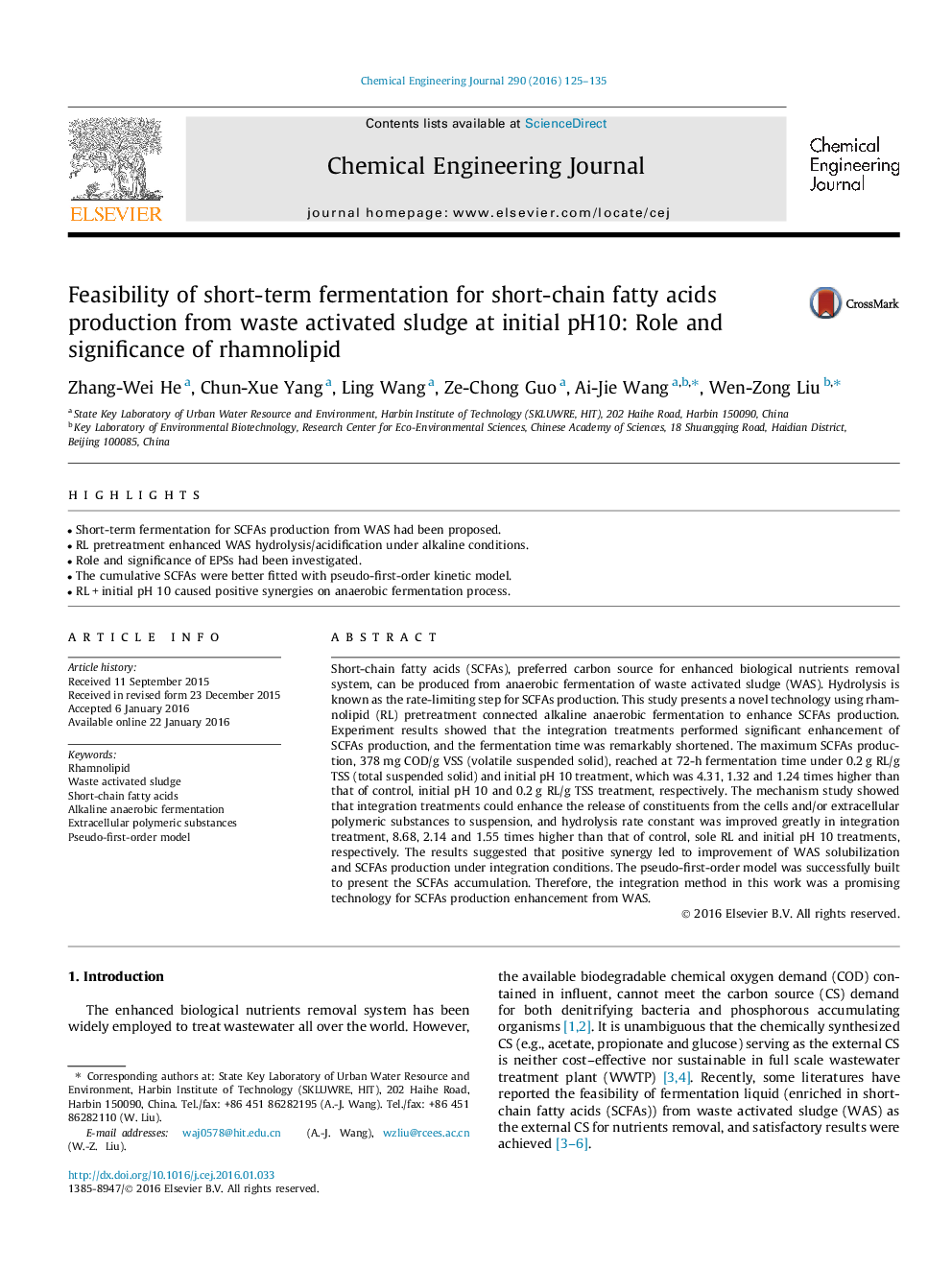| کد مقاله | کد نشریه | سال انتشار | مقاله انگلیسی | نسخه تمام متن |
|---|---|---|---|---|
| 145755 | 456351 | 2016 | 11 صفحه PDF | دانلود رایگان |

• Short-term fermentation for SCFAs production from WAS had been proposed.
• RL pretreatment enhanced WAS hydrolysis/acidification under alkaline conditions.
• Role and significance of EPSs had been investigated.
• The cumulative SCFAs were better fitted with pseudo-first-order kinetic model.
• RL + initial pH 10 caused positive synergies on anaerobic fermentation process.
Short-chain fatty acids (SCFAs), preferred carbon source for enhanced biological nutrients removal system, can be produced from anaerobic fermentation of waste activated sludge (WAS). Hydrolysis is known as the rate-limiting step for SCFAs production. This study presents a novel technology using rhamnolipid (RL) pretreatment connected alkaline anaerobic fermentation to enhance SCFAs production. Experiment results showed that the integration treatments performed significant enhancement of SCFAs production, and the fermentation time was remarkably shortened. The maximum SCFAs production, 378 mg COD/g VSS (volatile suspended solid), reached at 72-h fermentation time under 0.2 g RL/g TSS (total suspended solid) and initial pH 10 treatment, which was 4.31, 1.32 and 1.24 times higher than that of control, initial pH 10 and 0.2 g RL/g TSS treatment, respectively. The mechanism study showed that integration treatments could enhance the release of constituents from the cells and/or extracellular polymeric substances to suspension, and hydrolysis rate constant was improved greatly in integration treatment, 8.68, 2.14 and 1.55 times higher than that of control, sole RL and initial pH 10 treatments, respectively. The results suggested that positive synergy led to improvement of WAS solubilization and SCFAs production under integration conditions. The pseudo-first-order model was successfully built to present the SCFAs accumulation. Therefore, the integration method in this work was a promising technology for SCFAs production enhancement from WAS.
Journal: Chemical Engineering Journal - Volume 290, 15 April 2016, Pages 125–135